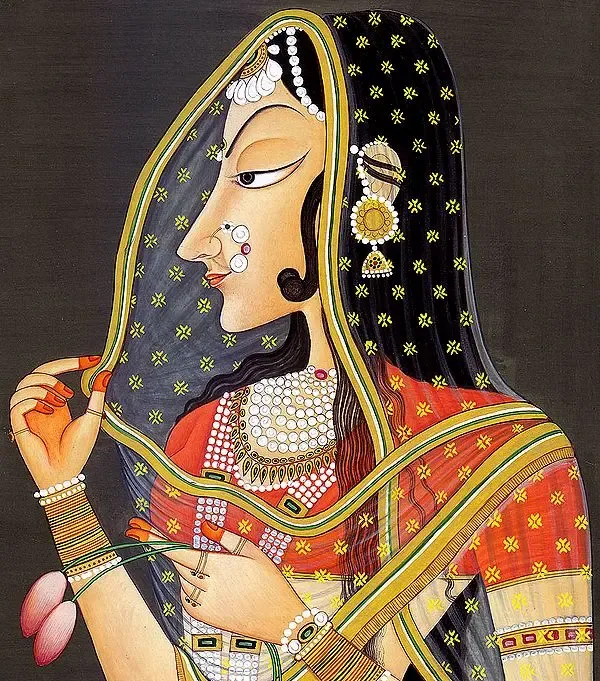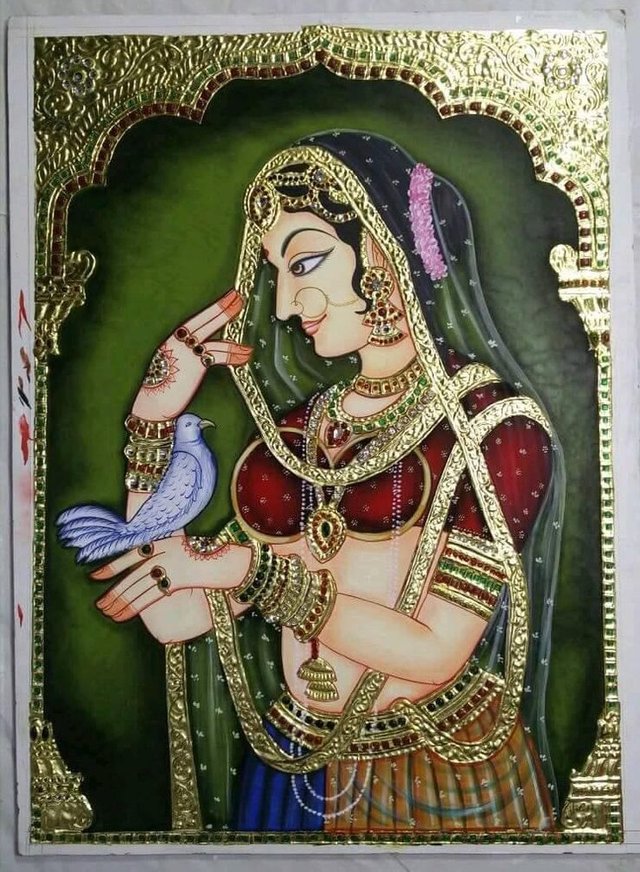Rajasthani Painting - A Glorius Tradition of Indian Arts in Medival Period.


Rajasthani paintings were favorably nurtured in medieval India, with the encouragement and financial help from the kings of several independent states of Rajasthan. They were also termed as Rajputana paintings, as the land of Rajasthan was popularly known as Rajputana too in medieval India, between 16th to 19th century.
It was one of the most popular forms of medieval Indian art, parallel to the Mughal form of arts which received the maximum patronage during that specific period. But it differs from Mughal paintings in its choice of subjects, use of colors and the depiction of the human figures in those paintings. Rajasthani paintings were drawn mostly on religious topics, like stories of Radha Krishna or chapters from Ramayana and Mahabharata. The human figures all were shown to be wearing Hindu attires,more modest and pious in nature than the subjects of Mughal paintings which were much more boldly drawn and had no religious touch in them. The landscape paintings of Rajasthani form showed the rough and sandy features of the desert land of Rajasthan, while Mughal paintings emphasized on the background of colorful gardens and pleasant landscape as liked by the Mughal rulers.
Like quite a few other contemporary Indian art forms, Rajputana art also used several natural colors, derived from plant body parts, rocky minerals, even powdered precious stones and fine particles of gold and silver. These great artists never used any chemical colors to create their paintings. They crafted fine brushes from plant twigs and hairs from tails of squirrels to paint their pictures. The pictures were drawn not only on papers or canvas, but superb paintings had been made on the walls and ceilings of many famous Rajput palaces and forts built during that era, like City Palace in Udaipur. But the most impressive form of Rajasthani painting was miniature paintings; made mostly on silk, wood and paper; but some miniature paintings were also created on ivory and marbles.
Many schools of paintings flourished during that period, depending on their specific characteristics and the particular regions where they were developed. Some of these popular schools of Rajasthani paintings are Mewar School of painting, Marwar School of painting, Bundi paintings and Kishangarh paintings. Even Kangra and Kulu schools of paintings were included in the Rajasthani form of arts, due to their distinctive nature of paintings.
These paintings not only describe the religious beliefs of the Rajasthani people of that period, but they also give a proper insight into the social life of the people living during the medieval age. Thus they help everyone to get a clear picture of the royals as well as the general mass of Rajasthan, living at that era.
Rajasthani painting is revered as an ancient and very progressive form of painting till today among the painting lovers of the world.
